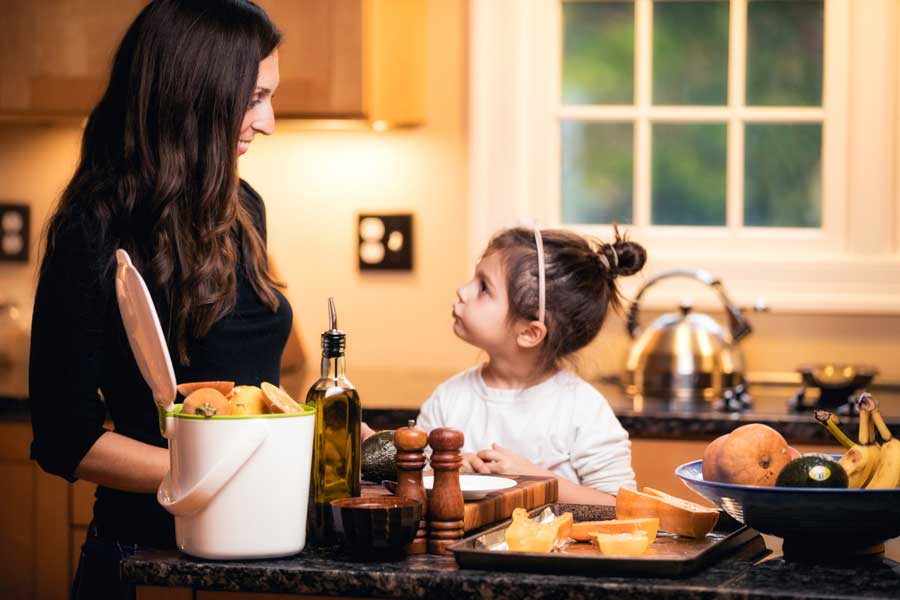10 Ways Americans Waste Money
Materialistic, overly consumptive, and incredibly wasteful: The stereotype of the average American around the globe isn’t flattering. And while being wasteful isn’t a personality trait most of us aspire to have, for many US citizens, wasting enormous amounts of resources and money is simply our way of life.
Fellow Americans, we can do better. On today’s show I rank order 10 specific ways Americans waste money without even realizing it; I also offer practical action steps toward resourcefulness for today and onward.
Powered by RedCircle
10. Unused gift cards
Most people enjoy getting gift cards as a gift – after all, you can use it for whatever you like!
I regularly buy gift cards for others: they’re minimalist, people get purchase what they truly want or need with them, i’m a big fan of gift cards.
But it turns out that by one estimate, $41 billion worth of gift cards went unredeemed from 2005 to 2011. According to Bankrate.com, 51%of U.S. adults have unused gift cards, and the average person is leaving $116 on the table per year.
By law, gift cards can’t expire for 5 years, so this is your friendly reminder to use them up. Why use your hard-earned money when you have money sitting on a piece of plastic waiting to be spent?
Another reason to use those gift cards now? We’re in a period of inflation. If you have a $50 gift card, let’s say, that $50 may not go as far in 2 months or in 1 year if prices continue to rise.
Receive a gift card for a store at which you don’t shop? Sell the card, re-gift it, or donate it.
9. Expedited shipping
Every year, 165 billion packages are shipped in the United States.
For some of these packages 165 billion packages, we Americans opt for expedited shipping.
It’s hard to say how much the average American spends on this. But if you spend an extra 10 bucks once a month, that’s $120 per year you’re spending on extra fast shipping.
Though there is a time and a place for emergency fast shipping, speedy shipping for the sake of getting your hands on your newest purchase as soon as possible is a habit that is so American and can burn a hole in your wallet.
Remember that expedited shipping often requires an airplane and there’s an added environmental cost associated with wanting things quickly.
Say it with me: We can wait a few days for our package to arrive. YES we can!
8. Not returning items
Online shoppers waste $152 per year, on average, on unused items. Men behave significantly worse in this regard, wasting $185 annually compared with the $124 that women spent on unused purchases.
If you bought something recently and you don’t 100% love it or need it, consider returning it right now before the return window closes.
Americans report that the Number One reason why they don’t return unwanted purchases is because of the hassle. But returning items you don’t love and won’t use is a minimalist habit: why would you spend money on items that don’t fit into your life?
Keep clutter at bay by returning items you’re not going to receive value from.
7. Smartphone Apps
We love our games, and there’s certainly nothing wrong with infusing a bit of entertainment in our lives.
But have you noticed that the number of truly free apps out there continues to shrink?
Smartphone apps are a product and we’re buying them. According to TechCrunch.com: US iPhone users spent an average $180 on apps in 2021.
Even worse is that many smartphone apps are monthly recurring subscriptions. If you’re not careful and if you don’t cancel the ones you aren’t using you can end up spending much more than you intended on an app.
6. Lottery tickets
The average American spends $223.04 per year on the lottery.
But The Huffington Post claims a person’s chance of winning the lottery on a single ticket is one in 175 million. You have greater chances of getting struck by lightening or being killed by a shark than winning the lottery.
5. Wasted food
According to the National Resources Defense Council, Americans waste $165 billion annually by tossing away unwanted snacks and meals. The math works out to approximately $529 per person each year.
Minimalism is about buying less, and this tenet works with food purchases as well. At the grocery store, buy less than you think you need. If you have a well stocked pantry I promise you won’t go hungry. And when you’re at a restaurant? Eat just half of the food on your plate; commit to taking the other half home for a future meal.
4. Wasted energy
Our houses leak heat. Light bulbs produce more heat than illumination. Our big screen TV sets draw power when they are turned off. This is just the start of the wasted energy problem.
The US is the second biggest consumer of energy in the world. The United States uses approximately 23% of the world’s energy, yet it only holds about 5% of the world’s population.
Based on annual home energy costs, Business Insider estimates that Americans throw away $443 billion on wasted energy, or $1118 per person per year.
There are plenty of things you can do to reduce energy waste in your home:
- Unplug appliances when not in use.
- Use smaller appliances for small jobs (example: toaster oven instead of big oven).
- Turn your thermostat down in winter months.
- Take care of drafty windows and doors.
- Turn off the AC and turn on the fans.
3. Unnecessary clothes
American families on average waste $1,280 annually on kids clothing.
All parents want their children to look beautiful, but spending money on costly designer clothing is a bit of a moot point. Kids outgrow their shoes and clothes quickly; they tend to stain them, too.
Does your child need more clothes? Accept hand-me-downs or thrift: you’ll be amazed at the money you save.
2. Manicures and pedicures
Nail salons in the U.S. charge an average of $19.50 for a manicure. The average cost of a pedicure is $32.25.
For every American woman who gets manis and pedis does so every two weeks, and spends approximately $1,345 per year on these services.
1. Unhealthy food
Americans spent $2.8 billion on candy last Halloween alone. Nearly half of Americans drink soda daily.
In 2018, the CDC reported that roughly one out of every 3 Americans consume some type of fast food on any given day.
The average American individually spends $1,200 a year on fast food alone.
Though soda and candy are delicious snacks, they do lower your quality of health and perhaps make you more likely down the line to get sick.
I know the privilege problem comes into play here and I’d be remiss if I didn’t mention it: people often eat junk food because it’s cheap and because it’s all that’s available to them. You’ve got to eat and you’re doing the best you can.
But The United States also has one of the highest costs of healthcare in the world. In 2020, U.S. healthcare spending reached $4.1 trillion.
People with good health insurance go into medical debt all the time and if you’re currently as a healthy as a horse you might not always be.
Invest in your health now, which essentially means make choices now (such as reducing junk food intake) so that you decrease your risk of developing disease down the road.
THE FINAL WORD
In a capitalist society, we tend to frame waste in the form of money (how much hard earned cash did we waste?) and in the zero-waste movement, we tend to frame the concept of waste in terms of how much plastic did we throw out or how big is our trash bag that we’re sending to the landfill?
These are narrow definitions. Let’s reframe waste by expanding our lens. Let’s start talking about wasted energy, wasted water, wasted fossil fuels, wasted raw material in addition to talking about wasted money and wasted food packaging.
It’s all interconnected. When we chip away at our wasteful habits in all areas slowly but surely, that’s when our impact starts to multiply.


